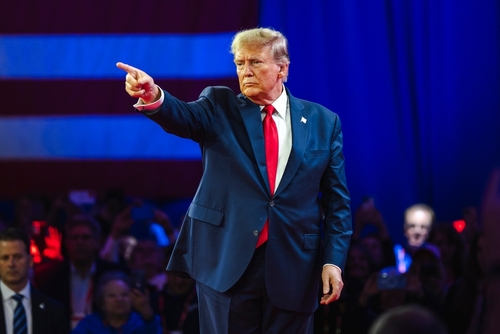Joe Rogan's recent podcast featuring Donald Trump has sparked fresh debates over censorship on social media, with the famed podcaster questioning YouTube’s handling of the interview. Rogan, known for hosting one of the world’s most popular podcasts, found the episode almost impossible to locate on YouTube’s search feature, leading him to speak out on concerns that big tech might be obstructing access to politically charged content.
The highly anticipated interview, recorded in Rogan’s Austin, Texas, studio, aired just ahead of the 2024 election season. Its timing drew massive viewership, reportedly surpassing 37 million views in the first weekend alone. Rogan remarked on social media that his followers struggled to locate the interview, attributing the issue to what he hinted might be algorithmic interference. He suggested that his platform’s unusually high engagement with the episode might have prompted YouTube to prevent it from trending—a concern that reflects Rogan's history of voicing mistrust in major tech companies’ influence over public discourse.
Since there's an issue with searching for this episode on YouTube here is the full podcast with Trump pic.twitter.com/sl2GTUaWdE
— Joe Rogan (@joerogan) October 29, 2024
The interview marks a notable turn in Rogan’s approach to featuring political figures. He had previously declined to interview Trump, citing neutrality concerns, but changed his stance for the 2024 election, explaining his intent to provide unfiltered conversations with candidates.
This shift was underscored by Rogan’s openness to hosting candidates from both parties, though his recent interactions suggest he’s found common ground with Trump on issues like free speech and social media transparency.
Joe Rogan describing his first time shaking Trump's hand is the funniest thing ever.
Rogan survived Trump's iconic "Power Pull" the first time, but Trump didn't make the same mistake twice.
I can't wait for the podcast tomorrow. It will absolutely make history. pic.twitter.com/NSeGupNlai
— George (@BehizyTweets) October 26, 2024
Adding to the intrigue, Rogan’s team confirmed ongoing discussions with Vice President Kamala Harris’s campaign about a potential appearance on the show, though no final decision has been made. Analysts note that Rogan’s audience leans significantly male and younger—a demographic Trump aims to retain, while Harris seeks to engage. Rogan’s considerable reach—reportedly 81% male, with 56% under 35—provides an influential platform in this tight election cycle.
In a related statement, Trump’s campaign praised Rogan’s platform as a way to bypass “corporate media,” amplifying his direct line to American voters. This stance aligns with Rogan’s past criticisms of mainstream outlets and complements Trump’s strategy of sidestepping traditional media. Rogan and Trump reportedly discussed a wide range of topics, including tech censorship and political division in the U.S., and Rogan remarked that the episode might serve as a counterbalance to perceived bias in news reporting.
The conversation’s popularity has also amplified calls for reform regarding algorithm transparency. While platforms like YouTube and Google have repeatedly denied politically motivated interference, critics argue that algorithms often disproportionately impact conservative or controversial content creators. Rogan’s episode with Trump, specifically, was seen by many as a test case for free speech amid rising scrutiny of content moderation practices.
Both Trump and Harris are reportedly aware of the strategic importance of Rogan’s audience. With the election just days away, Harris has lined up additional media appearances, including an interview with Fox News—a move viewed as an attempt to gain ground with more conservative-leaning voters. Trump, meanwhile, continues his outreach to younger demographics, where Rogan’s appeal is viewed as particularly valuable.

